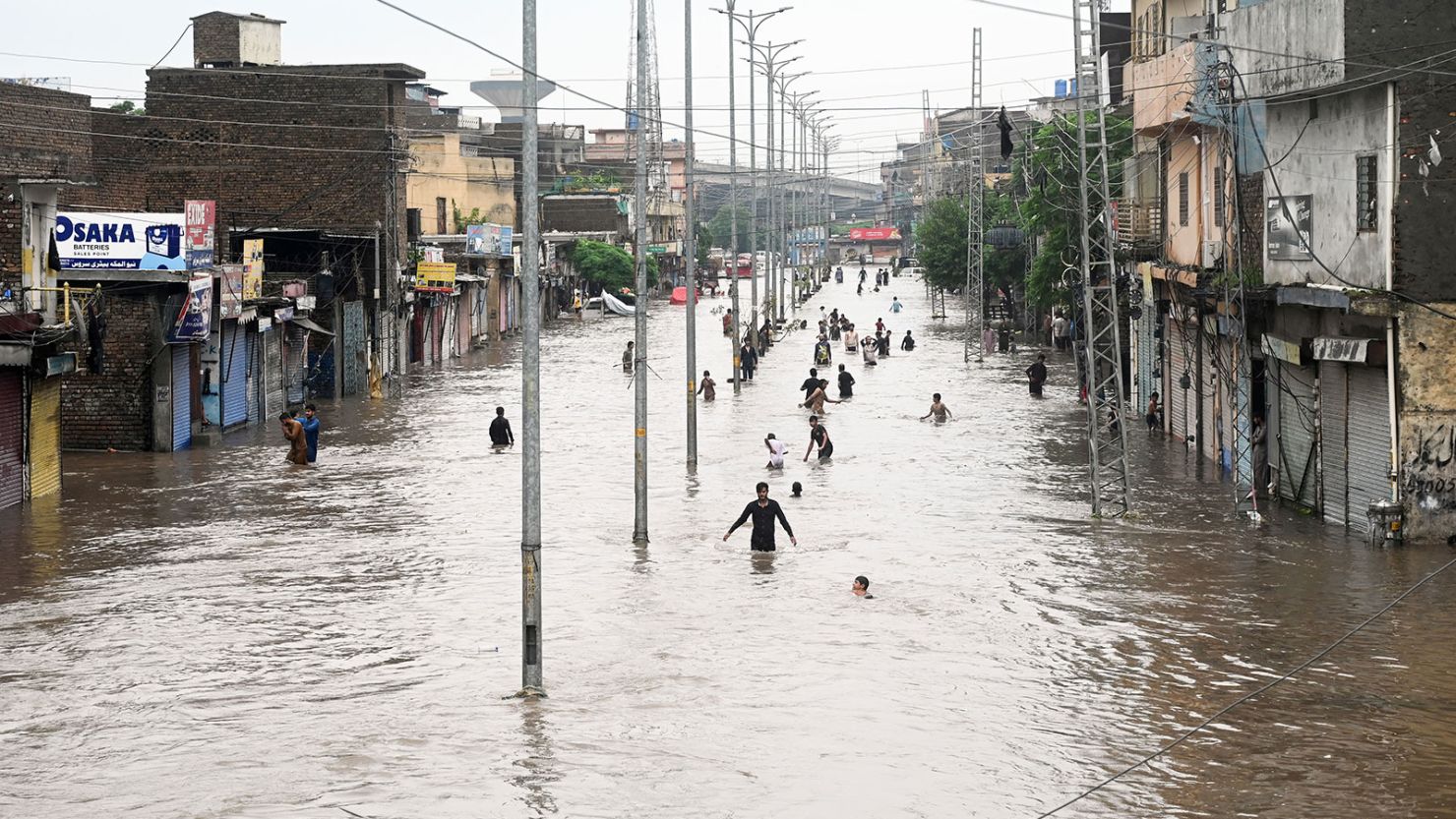Relentless flooding in eastern Pakistan has resulted in the deaths of over 170 individuals, with nearly half of the victims being children. This tragic event highlights the country’s increasing vulnerability to the impacts of the climate crisis. According to the National Disaster Management Authority (NDMA), at least 54 of these fatalities occurred within the last 24 hours as torrential rains swept through the populous province of Punjab. The floods have caused extensive destruction, collapsing homes and uprooting infrastructure.
The NDMA reported that at least 85 children have lost their lives since the onset of flooding on June 26, 2023. Aid agencies are raising concerns about the heightened risks faced by children, who are particularly susceptible to drowning and severe illnesses stemming from waterborne diseases. In response to the crisis, authorities have declared a state of emergency in several districts, and the military has been deployed in the city of Rawalpindi to address rising floodwaters.
Emergency Response and Community Impact
Video footage released by Punjab’s Disaster Management Authority captures the urgency of the situation, showing first responders executing dramatic rescues as floodwaters inundate fields and roads. In one instance, rescuers are seen transporting children to safety in inflatable rafts.
The heavy rainfall continues to batter Rawalpindi and the nearby capital, Islamabad, with some areas recording over 100 millimeters of rain on Thursday, as reported by Pakistan’s Meteorological Department. More rainfall is expected, adding to the existing challenges faced by the affected communities.
Local resident Mahar Hammad, who lives in the Sargodha district, described the financial strain the floods have imposed on his life. As a daily wage worker selling vegetables, Hammad explained that his earnings, around 1,000 rupees ($4) per day, have all but vanished as his stock was destroyed by the flooding. “I’ve had huge losses. I was selling vegetables, and everything got submerged in water,” he stated. “I’m just a working person, and now I am facing significant setbacks.”
In response to the crisis, seven flood relief camps have been established throughout the country, offering food, water, medical supplies, and shelter to those displaced by the floods.
The Broader Climate Crisis in Pakistan
Pakistan has become a frontline nation in the fight against climate change, facing extreme weather patterns that include scorching heat and relentless monsoon rains. Senator and former Minister for Climate and Environment Sherry Rehman emphasized the gravity of the situation on social media, stating, “This is not just ‘bad weather’ – it’s a symptom of an accelerating climate crisis.” She called for urgent action to build resilience and preparedness into urban planning.
This year’s flooding revives memories of the catastrophic floods of 2022, which drowned a third of the country and claimed over 1,000 lives. The floods from last year led to widespread destruction, with countless families left without food or clean water. As floodwaters receded, many faced outbreaks of water-related diseases, particularly affecting vulnerable populations, including children. According to UNICEF, approximately four million children remained without access to safe drinking water a year after the disaster.
The current situation in Pakistan serves as a stark reminder of the urgent need for comprehensive strategies to combat the effects of climate change and protect those most vulnerable to its impacts.





































































